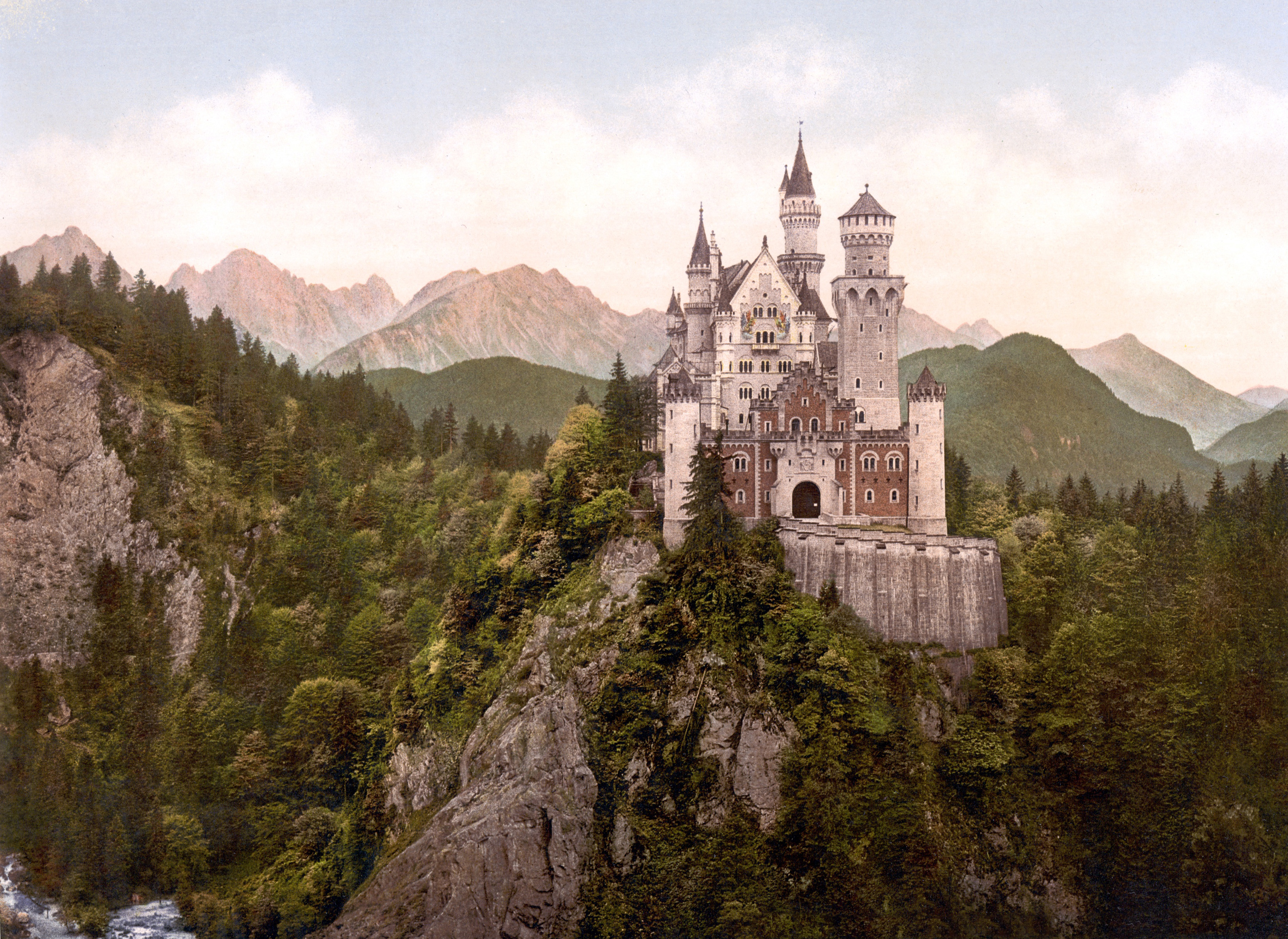Neuschwanstein Castle tour and hours
Structure of the day_Neuschwanstein Castle
Set amid magnificent mountain scenery...
Image source :https://upload.wikimedia.org/
Set amid magnificent mountain scenery on the shores of the Schwansee (Swan Lake), the fairy-tale Neuschwanstein Castle was built in 1869-91 for the eccentric Bavarian King Ludwig II, to a plan by the theater designer Christian Jank. On deciding to build this imposing residence, the king had undoubtedly been inspired by Wartburg Castle in Thuringia, which he visited in 1867. But Neuschwanstein is no ordinary castle-behind the pale gray granite exterior, which combines a variety of styles, the interior is equipped with several late 19th-century technological innovations.
A MODERN CASTLE
The medieval character of Neuschwanstein is illusory, for hidden behind the fa~ade is what was, for the period, state-of -the-art technology. The royal chambers, for example, all have central heating and there is running water on every floor with both hot and cold water in the kitchens. There is a dumb waiter linking the kitchens with the dining room. The third and fourth floors of the castle even have telephone jacks and an electric bell system, which Ludwig could use to summon his servants and adjutants (assistants)
Image source: http://www.bavaria.by/
THE SWAN MOTIF
Ludwig was fascinated by swans (hence his early identification with Lohengrin, the Knight of the Swan), not only as a symbol of purity, but also because he regarded himself as successor to the Lords of Schwangau, whose heraldic beast was the swan. Unsurprisingly, the swan motif dominates the castle's interior decor
Dining Room
Like many other rooms in the palace, the dining room includes fabulous pictures, intricately carved panels and beautifully decor a ted furniture, all bearing witness to the skill and artistry of 19th-century craftsmen.
Image source : http://www.neuschwanstein.de/bilder/background/thronsaal.jpg
Courtyard
The heart of the castle was supposed to have been a mighty 295-ft (90-m) high tower with a Gothic castle church. It was never built, but in 1988 its planned position was marked in white stone.



0 Response to "Neuschwanstein Castle tour and hours"
Post a Comment